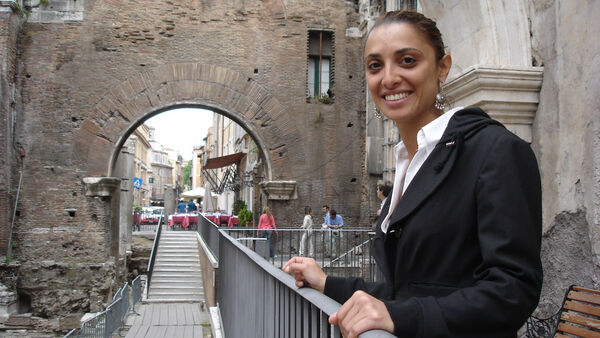Rome’s Jewish Legacy

By Rick Steves and Gene Openshaw
Today, nearly half of Italy's 35,000 Jews call Rome home. Jews here have a uniquely Roman style of worship and even preserve remnants of their own Judaic-Roman dialect. That's because, unlike most of the world's Jewish people, Roman Jews are neither Sephardic (descended from Spain) nor Ashkenazi (descended from Germanic Europe). Italy's Jews came directly from the Holy Land before the Diaspora, first arriving in Rome in the second century BC as esteemed envoys (hoping to establish business ties) and then, after Rome invaded Judaea in the first century AD, as POWs sold into slavery. These first Jews lived, like other foreigners, outside the city — across the river, in Trastevere.
The Romans favored the Jews because they were well-networked throughout the empire, they didn't push their religion on others, and most important, they paid their taxes. But with the fall of the Roman Empire, the status of Jews declined. As Christianity enveloped Rome, the state denied Jews their full rights as citizens, and once the pope became literally the king of Rome, the Church enforced laws that limited the spread of the Jewish faith (such as no proselytizing, no new synagogues, no intermarriage). The severity of these laws varied from pope to pope. Through most of the Middle Ages, the standing of Rome's Jews fluctuated, but for the most part they prospered and were often held in high regard as physicians, businessmen, and confidants of popes. The community in Trastevere was even allowed to spill across to the opposite bank of the Tiber.
Then, in 1492, Spain expelled its Jews, with similar removals following in other European countries. Rome's Jewish population doubled, swelling with refugees. By the 1500s, the Catholic Counter-Reformation — begun to combat rising Protestantism — turned its attention to anything deemed a "heresy" or simply not Catholic, including Judaism. In 1555, Pope Paul IV forcibly moved all of Rome's Jews into the undesirable flood zone inside a bend of the Tiber River, creating a ghetto of some 4,000 Jews packed into a miserable seven acres of mucky land. There they lived — in cramped conditions, behind a wall, with a curfew — for three centuries. They could go out by day, but had to return before the gates were locked at night. Jews were forced to wear yellow scarves and caps, and were prohibited from owning property or holding good jobs. During Carnevale (Mardi Gras), they were forced to parade down Via del Corso while Christians lined the streets and shouted insults. Through this long stretch of oppression, the synagogue was the only place Jews could feel respected and dignified. It's no wonder such loving attention was given to the Jewish tools of worship.
Rome's Jews enjoyed a little boost in freedom when Napoleon occupied the city (1805–1814) and after the ghetto walls were torn down in 1848. But it was only after Italian unification in 1870 — when a secular government replaced the religious rule of the Vatican — that the ghetto's inhabitants were granted full rights and citizenship. When Rome became the country's capital, the city — ashamed of its shoddy Jewish quarter — destroyed the old ghetto and modernized the district, giving it the street plan we see today.
Then came the rise of fascism. Even though Mussolini wasn't rabidly anti-Semitic, he instituted a slew of anti-Jewish laws as he allied himself more strongly with Hitler. When Mussolini was deposed and the Nazis occupied Rome late in the war, the ghetto community was suddenly in even greater danger. Of the 13,000 ghetto dwellers, 2,000 were sent off to concentration camps. Only a handful came back.
A measure of healing and reconciliation came with Pope John Paul II, who took a special interest in fostering relations with the Jewish community. It was John Paul II who finally acknowledged that the Church should have intervened more forcefully to defend the Jews during the Holocaust. In his last letter, John Paul II thanked Rome's emeritus rabbi for allowing him to initiate this Catholic–Jewish rapprochement he felt was so long overdue.
Gene Openshaw is the co-author of the Rick Steves Rome guidebook.

